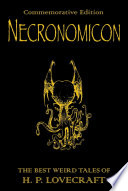-
-
JS Minification is seriously addictive.
Having gotten hooked on it during the first js1k, written about extreme JS minification and submitted a bunch of stuff to 140bytes, I think it's fairly safe to say I'm an addict. Because of that, there was really no chance that I could let this year's js1k go by without entering.
The theme this year is ‘Love’. Seeing as I never actually submitted my maze1k demo, I decided I'd spruce it up, restyle a bit and submit it covered top to bottom in hearts.
There's not a lot I can say about minification techniques that hasn't already been covered either on this site, on Marijn Haverbeke's site, on Ben Alman's or on the 140bytes wiki page on byte-saving techniques. The only things I will add are a couple of techniques which are new to me. I have thoroughly commented the code below, however. If you want to play along, have a look.
Left-first Evaluation
It's a feature of most programming languages that when you have a logical operator such as
&&or||, the value of the left side of the operator determines whether the right side will be evaluated at all. If the left side of an AND is false, we're going to get a false for the whole thing. It doesn't matter what the right side is so we don't even need to look at it. Similarly, if the left side of an OR is true, the eventual return value will be true so we don't need to look at the right. For example, here are two statements:coffee&&morning wine||workIn the first example (
&& – AND), we will only checkmorningifcoffeeis true. We first have a look atcoffeeand if it is false, we don't care whether morning is true or not, we just skip it (and, presumably, go back to bed). Ifcoffeeistrue, we'll then have a look to see if morning is true. It doesn't matter if morning is a function or a variable assignment or whatever, it will only happen ifcoffeeis true.In the second example (
|| – OR), we will only evaluateworkifwineis false. We start by looking at and evaluatingwine. If that is true, the JS interpreter saves us from even consideringworkand skips it. The right-side of the operator,work, is only considered if wine is false.You can probably see how, in a few simple situations, this can help avoid an
if(), thereby saving at least one byte. Usually.‘A’ font
If you want to set the font-size on a canvas 2D context, you have to use the font property. Makes sense, right? Unfortunately for obsessive minifiers, you can't just set the fontSize, you also have to set the fontFamily at the same time:
canvas.getContext('2d').font="20px Arial"Failure to set the font family means that the whole value is invalid and the font size isn't applied.
My thought process: “But 'Arial'? The word's so… big (5 bytes). There must be some way to make this smaller. If only there were a font called ‘A’ (1 byte)…”
Well, it turns out, if you set a font that doesn't exist on the user's system, the canvas will fall back on the system sans-serif by default. On windows that is... Arial. On OS X, it's Helvetica. I'm glad about that because otherwise, Helvetica wouldn't get a look-in, being 9 whole bytes.
There is always the chance that someone will have a font called ‘A’ but I'm willing to take that risk. This possibility could be avoided by using an unlikely character like ♥ for the font name.
The code
These are hosted on GitHub rather than in my usual code blocks to make it easier for you to fork them, pull them apart and get elbow-deep in them.
The almost-impossible-to-read minified submission:
The full, unminified code with thorough commenting:
The submission
My entry is up on the js1k site now. It's already getting quite busy up there after only a few days and I have to say I'm impressed by the fantastic job @kuvos has done in building it up over the last couple of years and providing me with fuel for my addiction.
-
SSH Access Limiting
Adding the following rules to the iptables will limit SSH access to 5 connections within a 60 second period. This should be more than enough for normal usage but is far too limiting to allow a brute-force dictionary attack. This must be installed as root.
iptables -A INPUT -i eth0 -p tcp –dport 22 -m state –state NEW -m recent –set –name SSH iptables -A INPUT -i eth0 -p tcp –dport 22 -m state –state NEW -m recent –update –seconds 60 –hitcount 5 –rttl –name SSH -j DROPImportant
If you're experimenting with iptables, you should add this to the crontab first:
*/10 * * * * /sbin/iptables -FThis will reset all rules every 10 minutes just in case you add something dumb and lock yourself out.
-
ImpressJS Tools
While putting together last week's promo video for Museum140 (a vote'd be awsm, btw), I knocked up a few tools to make my life easier. As I always say, if you find something you like, make a plugin for it. Seriously, I always say that. That might even be how I proposed to my wife, I'll have to check.
Anyway.
Play
This is a simple timing helper. It just provides a little array you can push slide durations into and at the end, you call 'play'. I can't see many uses for this other than in creating videos.
ImpressJS.play(3000); //Set the first slide duration for 3 seconds ImpressJS.play(1000); //Set the second slide duration for 1 second ImpressJS.play(); //Play from the startEdit
This is much more useful.
If this script is included in the page (after the impress.js script), you can drag your slides around, rotate and scale them into exactly the position you want. Once you're happy, you can get the current HTML output onto the console for pasting back into your original slideshow file. I could have snuck in a drag-n-drop file handler but that would make it Chrome only.
Disclaimer
These tools rely on ImpressJS having a public API which it currently doesn't have. It's obviously high on the author's priority list (given the amount of discussion it's raised) but, as too many pull requests spoil the broth, I've made a little fork of my own, added the public functions the tools require and I'll update them once the main repository's settled down a bit.
Download
These are available in the tools folder of this fork of impress.js. Each one contains an example. Hopefully, these will be updated to use the public API as soon as it's available.
-
Museum140 Shorty
As regular readers are probably aware, one of my side projects is helping out Museum140 with tech and design support (building websites, designing stickers, etc). Jenni's the main driving force behind some of the coolest “Museums and Social Media” projects of the past year.
The Museum140 project is in the running for a Shorty Award so I thought I'd help out by making a promo video. Of course, it's always best to play to your strengths so I built the video as a web page…
ImpressJS
HTML5 slideshows are all pretty cool (I even used one myself a few months back) but most of them deliberately emulate traditional slide presentations. When I saw ImpressJS for the first time last week, I was astounded. Its style is based on prezi.com but built using CSS3 rather than Flash. As well as being an inventive way of giving presentations, it also gave me an idea.
A couple of hours coding later and we've got a simple but stylish video with every word and phrase positioned perfectly. I wrote a little helper function to assist in creating a consistent timeline and recorded it in Screenflow. After that, I spent 10 minutes with the other kind of keyboard and came out with a nice little piece of background music, too.
The Video
There you go, ImpressJS is not only good for slideshow but also promo videos. Not bad.
Vote?
It would also be remiss of me if I didn't ask those of you with a twitter account to at least consider voting.






